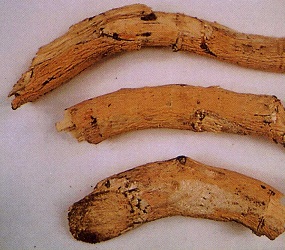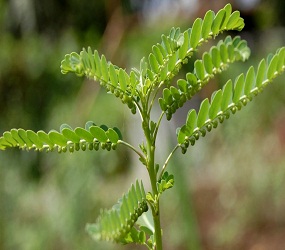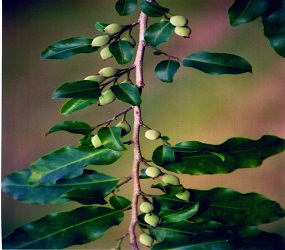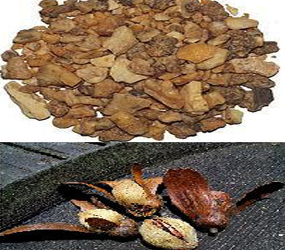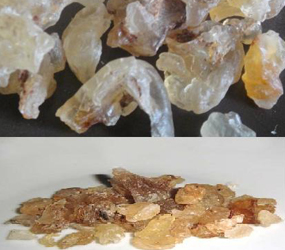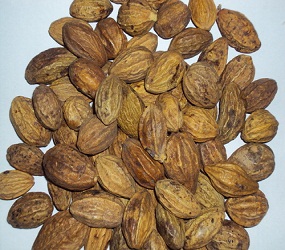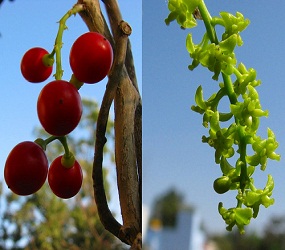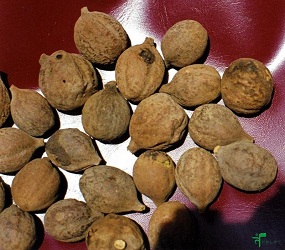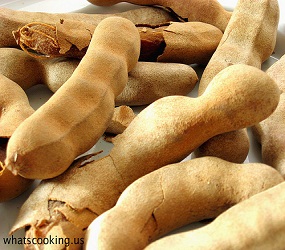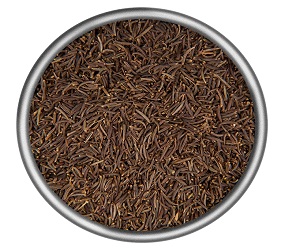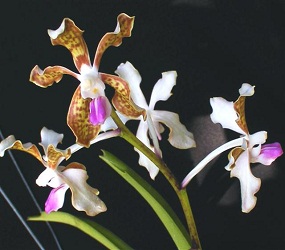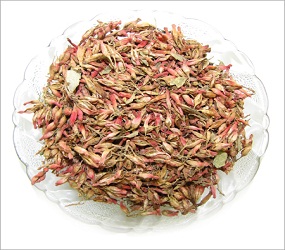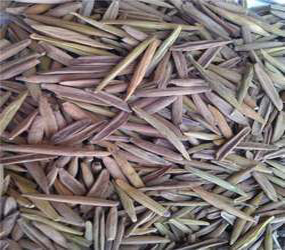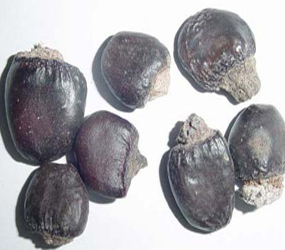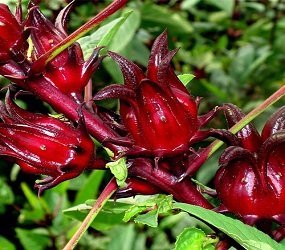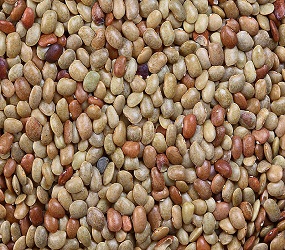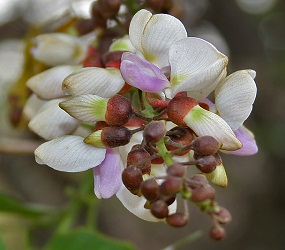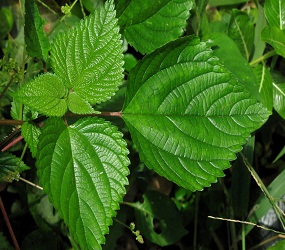INDICUM
Uses: Plant pacifies inflammation, sprains; they are useful for dropsy, flatulence, colic, diarrhea and dysentery. Stem bark paste is applied for the cure of scabies and to treat arthritis. Leaf decoction is given in treating stomachache, ulcers.
TURPETHUM
Uses: Plant pacifies anthelmintic expectorant, anti-inflammatory and purgative properties. It is one of the plants mentioned in the literature having claims of activity against liver disorders. It is anti-inflammatory in action because of its hot potency.
AMARUS
Uses: Plant pacifies anorexia, jaundice, urinary retention, constipation, the plant is bitter, stomachic, diuretic, febrifuge and antiseptic. Whole plant is used in dropsy, gonorrhea, genital affections. It is useful ingartropathy, dropsy, jaundice, diarrhoea.
ROXBURGHII
Uses: Bark & leaves used as medicine; leaves and fruits used as medicine for rheumatism. Decoction of leaves and stones given in colds & fever, leaves also for fodder, fleshy fruit has ahard seed-containing stone.
CUMINI
Uses: Plant pacifies diarrhea, diabetes, leucorrhoea, fever, skin diseases and general debility. The seeds contain glycoside which prevents the conversion of starch into sugar & controlling blood sugar.
ROBUSTA
Uses: Plant pacifies nervine pain, arthritis, infection, wounds, ulcers, burns, fracture, fever, hemorrhoid, jaundice, splenomegaly, obesity, headache, and skin diseases & chocolates base.
URENS
Uses: Trees exude gum karaya used in foodstuffs as thickener, emulsifiers, stabilizers. As a laxative, and as a denture adhesive. Seeds are eaten after roasting. Seeds and young tender roots are eaten.
CHEBULA
Uses: Plant pacifies tridoshas, wound, ulcer, inflammation, anorexia, flatulence, haemorrhoids, jaundice, hiccough, cough, vesical and renal calculi, epilepsy, skin diseases, leprosy, intermittent fever, cardiac disorders, stomatitis and neuropathy.
CORDIFOLIA
Uses: Plant pacifies burning sensation, rheumatoid arthritis, gout, cardiac debility, skin disease, anemia, cough, jaundice, oligospermia and urinary system diseases.
BELLIRICA
Uses: Plant pacifies cough, bronchitis, allergic cough, insomnia, edema, dyspepsia, flatulence, hemorrhage, skin diseases, diarrhea, dysentery, leukoderma, and graying of hair.
INDICA
Uses: Plant pacifies indigestion, dyspepsia, swelling, inflammation, pain, arthritis, skin diseases, stomatitis, constipation, hemorrhoids, leucorrhoea and urinary retention.
ANTHELMINTICA
Uses: Plant pacifies roundworm and threadworm infestation, cough, urinary retention, inflammation, skin diseases, abdominal colic, fever and leucoderma.
TESSELLATA
Uses: The roots are used in bronchitis and rheumatism. It enters into the preparation of medicated oils, used externally in rheumatism and nervous troubles. It is also remedy for secondary syphilis and scorpion-sting.
FRUTICOSA
Uses: Plant pacifies skin diseases, burning sensation, hemorrhage, anemia, leucorrhea, menorrhagia, diarrhea, dysentery, ulcers, diabetes, oligospermia, urinary tract infections and jaundice.
TINCTORIA
Uses: The leaves of Sweet Indrajao contain beta-amyrin and glucoside, which give the plant its skinhealing properties.used to treat psoriasis, nonspecific dermatitis and herpes.Its astringent and antibacterial properties are beneficial in treating scalp disorders like dandruff.
ANACARDIUM
Uses: Semecarpus Anacardium seeds pacifies in piles, colitis, diarrhea, dyspepsia, ascites, tumours and worms, and also used as a marking nut.
SABDARIFFA
Uses: The plant is considered to have antihypertensive properties. Primarily, plant is cultivated for the production for best fiber from stem of the plant. The fiber may be used as a substitute for jute in making burlap. Hibiscus, specifically Roselle, has been used in as food colorings, folk medicine as a diuretic, mild laxative, and treatment for cardiac and nerve diseases and cancer.
PEA/BEAN
Uses: Used just as one ingredient and also flavor booster in a number of dishes. Subordinates cholesterol level, Rich anti-oxidants, Component of weight loss diets, great for diabetic conditions, Low in Fat and Calories, Best for the stomach.
LINN
Uses: It is made from dried unripe green mangoes. It has a delicious honey-like fragrance and sour fruity flavor. Aamchur is used in curries, chutneys, pickles, and stir-fries, both with vegetables and with meats. It has a slight tenderizing effect in meat dishes. Use this powder to add a fruit flavor without adding moisture.
UNIFLORUM
Uses: Horse gram is sharp, bitter and hot. It is beneficial in cough breathing problem due to phlegms, flatulation, hicups, stones and fever. It also eliminates germs and worms. It causes impurities of bile and blood. It also causes inflammation and checks sweating.
LONGIFOLIA
Uses: Medicinally the tree is very valuable. The bark is used to cure leprosy and to heal wounds, tne flowers are prepared to relieve coughs, biliousness and heart-trouble while the fruit is given in cases of consumption and blood diseases.
GLABRA
Uses: Its oil keeps away insects and other microbes from the surface of the skin & beneficial in treating skin diseases. The seeds of Pongam Oil Tree yield an essential oil, which contains the chemical constituent karanjin. Karanjin gives the tree extracts its insecticidal and microbial properties. It is also an insecticidal and antimicrobial.
INVOLUCRATA
Uses: Tragia Involucrata Plant pacifies constipation, hemorrhoids, diabetes, skin diseases, vomiting, vertigo, giddiness and headache.



